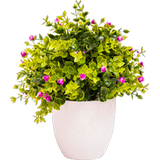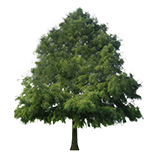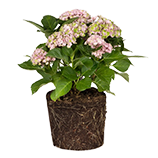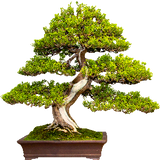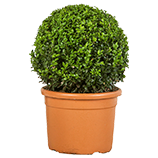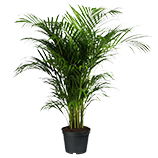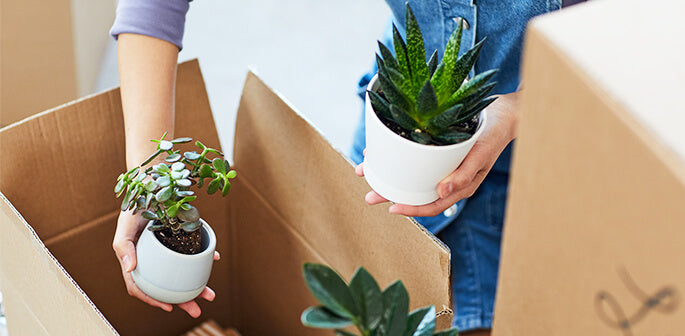
Description
Buy Russian Pomegranate Tree Online
Shop the Hardiest Pomegranate Tree – Abundant Sweet Fruit, Even in the Harshest Winters!
Looking to buy a Cold Hardy Russian Pomegranate Tree? Our Russian Pomegranate is perfect for cold climates, offering high fruit yield and resilience in USDA Zones 6-11. Shop now and get free shipping on your purchase! One of the most notable features of the Russian pomegranate tree is its exceptional cold-hardiness.
Unlike many other pomegranate varieties, which thrive in warm climates, this pomegranate tree can withstand colder temperatures. So, while planting pomegranate trees, you can rest assured that they will grow in regions with harsh winters. To get pomegranate trees for sale, visit Pixies Gardens!
🌳 Origin, Growing Conditions, and Optimal Habitat For Russian Pomegranate
This is a fascinating fruit-bearing tree, renowned for its resilience and prolific fruit production. Originating from the Caucasus region of Russia, this cultivar was specifically bred for its ability to withstand colder climates, unlike many other pomegranate varieties that thrive in warmer regions.
Characterized by its medium-sized stature and dense, bushy growth habit, the cold hardy Russian pomegranate tree typically reaches heights of 10 to 12 feet, making it an ideal choice for smaller gardens or orchards.
Ready to grow your own Cold Hardy Russian Pomegranate Tree? Click 'Buy Now' and get free shipping with your order!:
|
Parameter |
Details |
|
Family |
Lythraceae |
|
Growth Habit |
Deciduous tree |
|
Height |
Varies by cultivar, typically 10 to 15 Feet (2 to 3 meters) |
|
Lifespan |
20 to 30 years in optimal conditions |
|
Hardiness Zones |
USDA Zones 6 to 11 |
|
Temperature (F) |
Optimal growth in warmer climate and can survive in cold weather |
|
Soil pH Range |
5.5 to 7.5 |
|
Sun Exposure |
Full sun |
|
Watering Needs |
Moderate, drought tolerant in well drained soil and clay soil, regular watering is essential, especially during the first few years after planting |
|
Pruning Requirements |
Annual pruning in early Spring or Fall to remove dead or damaged branches and shape the tree |
|
Flowering Season |
Late spring to early summer |
|
Bloom Color |
Bright orange, red flowers |
|
Variants |
Cold hardy pomegranate, |
|
Fruit Ripening Season |
Late summer to fall |
|
Fruit Color |
Deep red fruit |
|
Fruit Flavor |
Sweet and tangy, with a hint of acidity |
|
Propagation Methods |
Seeds, cuttings, or grafting, in the right growing season |
|
Pests and Diseases |
Relatively pest and disease resistant, but may be susceptible to fungal diseases such as powdery mildew and pests like aphids and scale insects |
|
Harvesting Time |
Late summer to early fall |
✨Care and Maintenance of Cold Hardy Russian Pomegranate Trees
The cold hardy Russian pomegranate tree is relatively low-maintenance, but proper care is essential to ensure healthy growth and abundant fruit production. Here are some essential tips for caring for and maintaining Russian pomegranate trees and an answer to the question: How to Grow a Pomegranate Tree?
Planting: Where do pomegranate trees grow? Well, choose a sunny location with well-draining soil for planting your cold hardy pomegranate tree. Ensure the soil pH is between 6.0 to 7.0 for optimal growth. Dig a hole twice as wide and deep as the root ball and backfill it with a mixture of compost and native soil.
Watering: Russian Pomegranate trees prefer moderate watering, especially during the first few years after planting. Water deeply to encourage deep root growth, and water more frequently during dry periods. However, avoid overwatering, as it can lead to root rot.
Fertilization: Apply a balanced fertilizer, such as 10-10-10, in early spring before bud break. Repeat applications every 4 to 6 weeks during the growing season. Use a fertilizer formulated for fruit trees and avoid excessive nitrogen fertilization to prevent excessive vegetative growth.
Protection from Pests and Diseases: While Russian pomegranate trees are relatively pest and disease-resistant, they may still be susceptible to fungal diseases such as powdery mildew and pests like aphids and scale insects. Monitor your tree regularly for signs of infestation and treat it promptly if necessary.
Harvesting: Russian pomegranate fruits typically ripen from late summer to fall. Harvest the fruits when they are fully ripe, as indicated by their deep red color and slightly soft texture. Use pruning shears to cut the fruits from the tree, leaving a small stem attached.
By following these care and maintenance guidelines, you can ensure your Russian pomegranate tree for sale remains healthy, productive, and a beautiful addition to your garden or orchard for years to come.
(Researching is recommended to enhance Plant Knowledge effectively)
🔎Searching for 'Where Does Pomegranate Grow' or 'Pomegranate Trees for Sale?'
Looking to buy a Russian pomegranate tree to add a touch of exotic beauty to your garden? Look no further! Pixies Gardens offers high-quality, cold-hardy Russian pomegranate trees for sale, perfect for enthusiasts and gardeners alike. Our trees are carefully cultivated to ensure optimal health, so you can enjoy delicious pomegranates for years to come.
At Pixies Gardens, we pride ourselves on providing top-notch customer service and expert advice to help you select the perfect tree for your needs. Whether you're a seasoned gardener or just starting, our team is here to assist you every step of the way.
Average USDA Growing Zones

Frequently Asked Questions (FAQs)
How does Russian pomegranate taste?
Russian pomegranates taste sweet with a slight tartness when not fully ripe. Their arils are reddish, and they have bright colors. A cold hardy pomegranate tree produces many beautiful orange flowers during the spring.
Are Russian pomegranates self-pollinating?
Pomegranate trees, including Russian pomegranate trees, are self-pollinating, but pollination from other pomegranate trees increases fruit size and produces more fruit.
How big do cold hardy Russian pomegranate trees get?
Russian pomegranate trees grow to about 15 feet, with an equal spread at maturity. They prefer full sun to produce the best fruit, although they can tolerate a light shade.
How long does it take for a Russian pomegranate to fruit?
Russian pomegranate takes 2 to 3 years to fruit. Initially, they require between 100 and 200 chill hours. A mature pomegranate tree can produce 90-100 lbs. of fruit under optimal conditions.
Do you need two pomegranate trees to produce fruit?
The bees do all the pollination on self-fruitful pomegranate trees. The fruit production on both plants can increase when you plant another pomegranate tree nearby. It isn't necessary to cross-pollinate, but a little doesn't hurt.
Where is the best place to plant a pomegranate tree?
Sunlight is vital to pomegranate trees. To maximize your tree's growth rate, place it in full sunlight. Your tree should be planted in an area with sandy loam soil and good drainage. A good drainage system is also essential for your pomegranate tree to thrive.
Cold-Hardy & Russian Pomegranate Care Guide
Pollination Details
Cold-Hardy Red Pomegranates can self-pollinate, but for an optimal harvest, we suggest planting a second tree nearby to boost fruit production. This additional pollinizer will help ensure your pomegranates thrive.
Planting and Maintenance
-
Planting:
- Choose a sunny spot with at least 6 to 8 hours of sunlight per day. While pomegranates are versatile regarding soil types, good drainage is essential. Dig a hole twice as wide and just as deep as the root ball. Place the tree, backfill with soil, water well, and apply a 2 to 3-inch mulch layer to retain moisture.
- For container planting, select a pot twice the width of the tree's current container and ensure it has drainage holes. Use organic soil, place your tree, and water to help the roots settle.
- Note: The small, white beads or rocks in the soil are added for better drainage and overall plant health.
- Watering: While drought-tolerant, pomegranates prefer slightly moist soil. Water weekly, adjusting frequency in warmer months. Check soil moisture 2 to 3 inches down; water if dry.
- Pruning: After the first year, prune before the second growing season to remove dead or weak branches, promoting healthy growth and better flowering. For potted plants, remove suckers at any time and prune dead limbs in late winter.
- Fertilizing: In the second year, apply 2 ounces of nitrogen in spring, increasing by an ounce each year. By the fifth year, use 6 to 8 ounces of nitrogen in late winter before leaf emergence.
Plant Features
- Shape: Rounded
- Growth Speed: Medium
- Shipping Height: 1' - 2'
- Scientific Name: Punica granatum
- Mature Height: 8' – 10’
- Mature Spread: 8' – 10’
- Sun Preference: Full Sun
- Soil Preference: Moist, Well Drained
- Self-Pollinating: Yes
- Fruit: Large red fruits, ideal for fresh eating or juicing
- Chill Hours: 100 – 200 hours
- Fruit Bearing: 2 – 5 years
- Drought Tolerance: High once established
- Order today - Enjoy sweet, antioxidant-rich pomegranates from your own garden.
- Limited stock available—buy now to ensure timely planting and harvest this season.
- Planting Steps
- STEP 1: Choose a suitable planting location considering sun exposure, soil type, and space.
- STEP 2: Dig a hole twice as wide and as deep as the root system.
- STEP 3: Remove the plant from its pot, gently breaking up the root ball, and place it in the hole, ensuring the top of the root system is level with the ground.
- STEP 4: Backfill with native soil and any leftover potting material.
- STEP 5: Firmly pack the soil to eliminate air pockets.
- STEP 6: Water thoroughly after planting.
Growing Zones
- Zones: 7, 8, 9, 10
Mature Size
- Height: 8-10 ft
- Width: 8-10 ft
Sunlight Needs
- Sunlight: Full sun (6-8 hours)
Spacing Needs
- Spacing: 15-18 ft
Chill Requirements
- Chill Hours: 100-200
Growth Rate
- Rate: Moderate
Harvest Season
- Time: September
Time to Fruit
- Years to Bear: 2-3 years
Pollinator Information
- Pollinator: Self-pollinating
Note: The plant is shipped in its pot, firmly secured with several layers of clear tape, thereby avoiding any shuffling and moving during transit. The plant reaches you with minimal damage very safe and secure. We have been shipping plants like this for several years (plants are sometimes shipped in smaller pots for safety and ease of shipping). Most plants go dormant in Fall and Winter and will lose most of their leaves. Looking dead and dry, is very normal. The plant will flush out in Spring.
We cannot ship certain plants and some sizes to California due to restrictions placed by the California Department of Agriculture.
BUY FLOWERS, PLANTS AND TREES ONLINE ➔
Pixies Gardens is the best online plant nursery for all your gardening desires. When you buy fruit plants or buy shrubs from our online tree nursery, we make sure that each of our trees is producing fruit.
Our aim is to provide high-quality trees and plants for people who want to buy trees. With top-notch customer service at our online plant nursery here in ,Georgia, we want to create gardens where nature converses with the soul...
Our plant nursery online offers an extensive collection of flowering plants, lush trees, and vibrant shrubs.
Even if you want to buy artificial plants, we've got that too! So, decorate living rooms with indoor planters or buy evergreen trees, grow fruit trees, and set up outdoor planters with Pixies Gardens today!
Shop by Categories
View All Products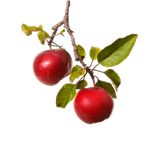
Fruit Plants/Apple Trees
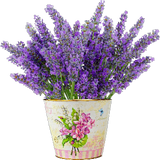
Flowering/Fragrant Plants
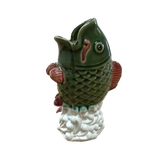
Ceramic Pot




